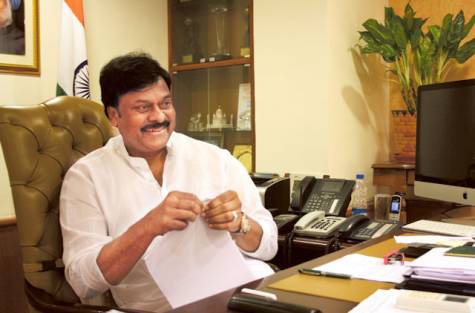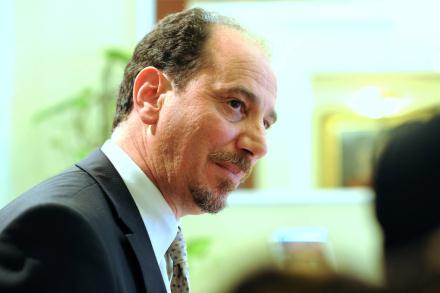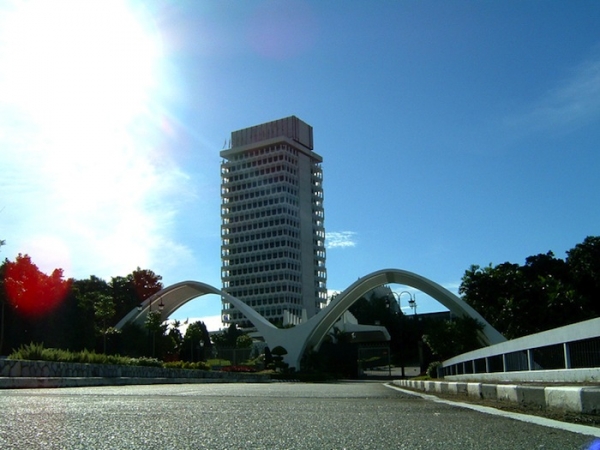A Dh3bn Rashid Hospital masterplan inspired by Sheikh Mohammed also in works as part of the health strategy 2013-2025
Vital signs are healthy for medical tourism in the emirate, as the Dubai Health Authority (DHA) announces three new hospitals, 40 new health centres and a Dh3 billion redevelopment plan for the existing Rashid Hospital.
As part of the Dubai Health Strategy 2013-2025, approved by His Highness Sheikh Mohammad bin Rashid Al Maktoum, Vice President and Prime Minister of the UAE and Ruler of Dubai, the masterplan is aligned with the Dubai Strategic Plan 2015 that aims to provide the resident population and visitors with access to internationally recognised levels of healthcare and transform the emirate into a hub for medical tourism.
Essa Al Maidoor, Director-General of the Dubai Health Authority (DHA) chalked out a detailed health strategy, saying: “The strategy takes into consideration the expected population growth of Dubai across the various geographical areas of the emirate.
“After a careful analysis of the Dubai Population growth study and after looking into all the health services presently available across the emirate, we chalked out the additional projects required until 2025.
“Access to healthcare is a priority and the new projects are in line with our strategy to have hospitals within the radius of eight to 12 kilometres from all catchments areas and health centres to be within three to five km of all catchment areas.”
New healthcare facilities on the plan
In a bid to achieve this target growth, DHA confirmed the need to build additional hospitals and clinics to serve this purpose.
Al Maidoor said: “Based on this, the Dubai Health Strategy master plan includes construction of three new hospitals and 40 primary healthcare centres across the geographical areas of the emirate.”
The three new hospitals include the Sheikh Mohammad bin Rashid Hospital on Sheikh Mohammad bin Zayed road; Al Maktoum Hospital will be located in Jebel Ali’s Al Maktoum Airport area; the third will be Al Khawaneej Hospital.
Meanwhile, Rashid Hospital will be rebuilt along with its adjoining area in a Dh3bn masterplan that will includes six new specialised health centres, one four-star and another five-star hotel, villas and flats for staff accommodation, a mosque, a lakeway and landscaping and open spaces for children and families.
Infrastructural growth
The UAE is fast developing into a top draw for medical tourism in the region, with research estimating the market valuation at $1.6 billion, with a seven per cent growth expected by end of 2013 as per market research firm, Euromonitor.
The mind-boggling number is only fuelled further by the Economic Intelligence Unit Estimates, which calculates the UAE’s healthcare spending to rise to a whopping $16.8bn by 2015.
“The UAE’s central geographic positioning, the efforts in connectivity by its airlines, the relaxing of visas have all collectively helped the efforts. It is what you call a one stop shop for all your needs,” Al Maidoor toldEmirates 24|7 earlier.
The government of Dubai has already taken a proactive step in creating a unified health tourism board, combining the expertise of the DHA, along with that of the Dubai Healthcare City and the Department of Tourism and Commerce Marketing, in facilitating the influx of medical tourists.
“The newly launched tourism initiative under the directive of the Crown Prince and the Chairman of Dubai Executive Council, Sheikh Hamdan bin Mohammed bin Rashid Al Maktoum, is strategising and identifying specialities that will fill market gaps that exist currently to draw in medical tourists,” he explained. “Investors will be facilitated to invest in the right fields, but expansion is imminent across all specialities.”
In a landmark move, a joint initiative, spearheaded by the DHA and the General Directorate of Residency and Foreigners Affairs (GDRFA), facilitates overseas patients who wish to seek treatment in Dubai to be able to avail of a three-month medical tourist visa, extendible twice up to nine consecutive months.
Currently, only hospitals with international accreditation such as the Joint Commission International (JCI) and those in the process of securing one will be eligible.
Referring to the current strategy, Al Maidoor said its four pillars are: prevention and awareness; easy access to health services; quality, and investment and competitiveness.
Highlighting the authority’s ambitious plans, he said: “The expansion plans have been designed to provide state-of-the-art services to the population of Dubai, as well as visitors who come to the emirate for medical tourism.
“The expansion plans not only fulfil the main criteria of provision of excellent healthcare facilities and health infrastructure but also taken into consideration landscaping, leisure activities, hotel accommodation for medical tourists, staff accommodation etc.
“All these aspects ensure we have taken a 360 degrees view of the requirements of patients, their families, staff members and medical tourists.”
Customer service index
In line with the DHA strategy 2013-2025, Sheikh Mohammed has also launched a new consumer care measurement mechanism known as the DHA customer service index.
Al Maidoor said: “Build on the lines of the concept of the index, the customer service mechanism has two bars: red and green. Green signifies satisfaction and red signifies dissatisfaction.
“Before exiting the premises, customers can press the ‘happy’ or ‘unhappy’ button and the rating will appear on the screen in the form of red and green bars.
“It will be implemented across all the DHA hospitals and primary healthcare centres and the DHA headquarters will have an area where all these screens are displayed and customer satisfaction can be viewed in real time.”
The thought process behind this service is to further empower customers to express their opinion and let them be the judge of the services provided by the DHA.
(With inputs from Bindu Suresh Rai)
source: http://www.emirates247.com / Emirates 24/7 / Home> News> Emirates / May 26th, 2013





